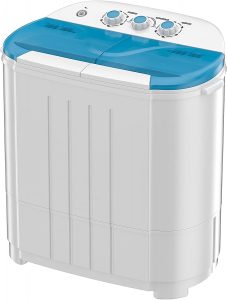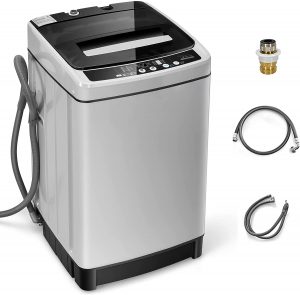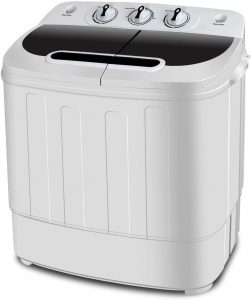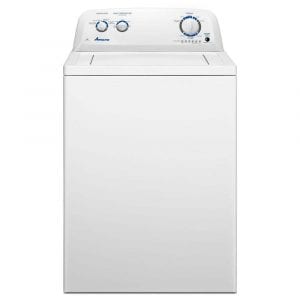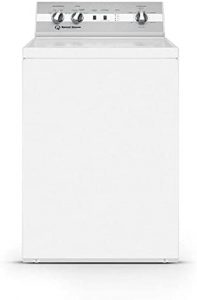The Best Top Load Washer
We looked at the top 13 Top Load Washers and dug through the reviews from 26 of the most popular review sites including and more. The result is a ranking of the best Top Load Washers.
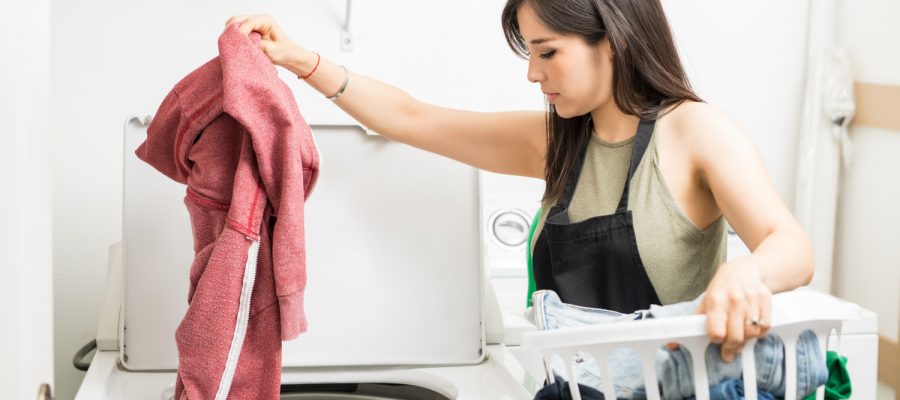
Our Review Process
Don't Waste Your Money is focused on helping you make the best purchasing decision. Our team of experts spends hundreds of hours analyzing, testing, and researching products so you don't have to. Learn more.
Our Picks For The Top Top Load Washers
This compact top load washer is perfect for individuals on the go, not just those with a small apartment. It has both wash and spin-dry baskets and can handle four shirts or two pairs of pants at once. The control switches are easy to use and allow for quickly setting washing and spinning times, as well as the washing mode.
Affordable PickWhen shopping on a budget, this economical top load washer is the way to go.
There's no need to drag your clothing to a laundromat, as this top load washer can be used in any small space, including a college dorm room. The built-in smart panel makes it easy to select from the 10 water levels and eight pre-set programs. If you prefer, you can just leave the machine on "normal" mode and it will determine the proper water leve...
Choice of FinishesWith this top load washer, you'll be able to choose between a white or gray finish.
If you enjoy extended camping trips, living out of your RV or keeping up with laundry in your dorm room, you'll love this top load washer. Not only does this washer fit in a closet or bathroom corner, but it also gets your clothes clean in just 20 minutes. As an added bonus, the machine features a translucent tub container window for checking on yo...
Ideal for ApartmentsThis top load washer has a washer on the left and a spinner on the right, so you can clean your clothes efficiently.
Traditional is the best word to describe this white top load washer. It has a simple design that is easy to use, while still getting your clothing items fresh and clean. Users will find the machine runs quietly, whether you choose the small, medium or heavy load option.
Classic LookThis top load washer has a 3.5-cubit feet capacity, which is perfect for couples or smaller families.
If you're searching for a top load washer that is built to last, look no further than this model. It features a commercial-grade steel cabinet, as well as a stainless steel tub. Thanks to the four cycle selections and the four load sizes, you can clean a small amount of laundry, or fill the machine to the top and was a large load.
Stainless Steel WasherDurability is what you'll get with this top load washer, which is made from top-notch stainless steel.
Buying Guide
Let’s face it: Nobody likes to do laundry. And that’s why buying a washer may be the most important purchase you make. It will be one of the appliances that gets the most use in your house, apart from maybe your dishwasher.
If you’re in the market for a top load washer, congratulations! You’re saving money already. In general, between the two types of washers — top loading or front loading — top loaders tend to be less expensive. On average, they can also handle more material per load, and they tend to run through their wash cycle at greater speeds.
As the name implies, laundry is loaded into the machine’s cleaning drum through the top, with controls and display monitors on a panel toward the back. Historically, they’ve used a plastic spire called an agitator that sits in the middle of the drum, turning during the wash cycle with fins on it to help catch and tumble the clothes. While some models still have this feature, the majority of top loaders have done away with the agitator. Newer washers use an impeller, which is a low-profile hub at the bottom of the drum that agitates the clothes by shooting a cross-current up into the laundry. This has the obvious benefit of creating space for more clothes, and it generally handles fabrics more gently.
No matter what method they use to stir things up, most top load washers are going to use more water than their front-loading counterparts. The good news is, the wash cycle won’t take as long. And even the water usage is a broad rule of thumb. Thanks to new technologies, top loading washers can be plenty efficient. High Efficiency (HE) washers have settings that can reduce the volume of water in certain cycles. To compensate, machines that operate on a HE setting will need a corresponding HE laundry detergent that keeps the suds to a minimum. (It’s available in most stores and offered by most major brands. Just look for the “HE” designation on the label.)
HE washers can also give your clothes a longer life.
“These washers have no agitator, so there’s less wear and tear on your clothing than a standard washer,” notes Vicki Liston, our home improvement expert. “The cycles are much longer but users feel their clothes and bedding are cleaner after the wait.”
Another thing to look for if you’re concerned about your bill is Energy Star certification. This EPA-backed rating establishes resource-saving standards for a variety of appliances. A unit with this certification uses roughly 25% less electricity and 33% less water than comparable, non-certified washers. Not only does this save the environment, but it will also save you money on utility bills.
Cash-saving perks aside, the type of laundry you do will likely determine the kind of washer you need. Plan on doing a lot of sheets? You’ll want to start by considering a washer with high-load capacity. Among top load washers, the drum capacity can vary greatly, anywhere from 2-3 cubic feet up to 8 or more. And while size matters, it’s hardly the only consideration. Your washer might have room for that fitted silk sheet, but it doesn’t mean it can wash it gently enough.
It’s worth a look at the washer settings to determine what kind of fabrics the machine will be able to handle. While we miss those college days when we could set every load on “cotton/sturdy” and turn it on, family life means a lot of different fabrics and different washing methods. If a washer has the capability to handle your specific kind of laundry, it will likely have a setting to match.
While older top loaders still might require you to drop in laundry detergent directly, the majority of modern units have a dispenser. This little plastic receptacle is good for more than saving you the trouble of measurement. Automatic dispensers can time out the dispersal of detergent at different stages in the wash cycle, and many models also have separate bins for fabric softener or bleach. If your washer has a pre-soak setting, that’s a great option for especially dirty loads. It means the unit can agitate and dole out a bit of extra detergent in low water prior to the main cycle for a focused burst of cleaning.
Our Expert Consultant

Home Improvement Expert
Vicki Liston writes, produces, and narrates “On The Fly…DIY,” an award-winning home improvement and DIY show of unique project tutorials for the casual DIY’er.
Home improvement and all things DIY have been Liston’s passion since she bought her first house in 2007 and she started making video blogs in 2014. She’s performed hundreds of DIY projects, from small ones to major, wall-smashing renovations and can teach you how to make a trendy DIY barn door for cheap. The proceeds earned from “On The Fly…DIY” are donated to no-kill animal shelters and rescue organizations.
Why we recommend these top load washers?
Products Considered
Products Analyzed
Expert Reviews Included
User Opinions Analyzed
What to Look For
- Avoid a move-in headache by considering the size of your washer first and foremost. And we’re not talking about the size of the interior drum. Top load washers can be smaller on length and width than front-loading models in general, but some can still take up more space than a small apartment’s laundry room will allow. Make sure to measure out the room, taking into account at least six inches of space behind the washer for power and hose hookups. For small laundry rooms (or spaces with no laundry room at all), consider a washer–dryer combo.
- Now, about that load size. You’ll want to check the capacity before you buy and compare it to your average load of laundry. Most washers measure that capacity in cubic feet, and it can vary greatly. Need perspective? Bear in mind that a king-size comforter will take up roughly 4.5 cubic feet, and a single cubic foot can hold 2-3 bath towels. Needless to say, never overload your washer. Clothes packed too tightly can harm both your washer and the clothes, especially in models that use an agitator.
- Speaking of capacity, don’t go overboard and pay for a larger washer drum if you don’t need it. “Think about what you’ll be washing before you opt for ‘bigger is better,'” says Vicki Liston, host of “On The Fly…DIY,” an award-winning home improvement show. “Realistically evaluating your personal needs will save you money, water and a lot of energy in the long run.”
- Budget washers can be fine for those who don’t plan on doing laundry too often, but consider an HE or Energy Star-certified model for extensive use. HE washers will have at least one setting that utilizes less water in the wash cycle. Energy Star certification means the washer will use significantly less water and power, saving you money on two utility bills. Note that HE washers will need special HE detergent to get the most out of each wash.
- Living in an apartment with thin walls, or a house with a light sleeper? Noisy washers can be a huge headache. Check the reviews to see how they fare. There’s no telltale sign for how noisy a washer is going to be, but in general, agitator-equipped older models will create slightly more of a racket, especially when dealing with larger loads. HE models are greener, and usually have the added benefit of quieter operation.
- Sturdy construction can make or break a purchase. This is an appliance you intend to keep for a while, after all. The casing and primary parts for most washers are going to be steel, but plastic isn’t necessarily a deal breaker if you’re buying a smaller washer. Regardless of size, the most crucial part of the washer is the drum. Look for stainless steel or some comparable alloy. It should go without saying that you want a material that won’t rust, and stainless steel has the added benefit of being able to weather the inevitable impact of loose change, keys or toys.
- Washing a lot of delicates? You’ll want a washer that has the agitation and temperature settings that can handle it, and you may want to lean toward a model that mixes loads with an impeller as opposed to an agitator. If you really care about your material, don’t sleep on special settings such as pre-soak, which can handle tough stains with an extra jolt of detergent. A steaming option can be another nice feature, especially in units with an agitator or smaller drum. It’s no substitute for real dry cleaning, but can help smooth out the wrinkles in problematic fabrics.
- Check to see what kind of dispenser your washer has. A dose of fabric softener can help your clothes keep their smoothness, and a bleach compartment can be useful when you need to focus on tough stains. Mind you, you can still use softener or bleach even if the dispenser doesn’t contain a space for it, but you’ll need to add them manually at the correct time in the cycle. With bleach, this can be especially crucial. Wait at least five minutes after the washer has started before dropping in a half-cup. Otherwise, it can cancel out stain-fighting enzymes in the detergent.
You May Also Enjoy Our Other Reviews
- Robotic Vacuum
- Cordless Vacuums
- Air Mattress
- Drone
- Electric Razor
- Convertible Car Seat
- Infant Car Seat
- Dry Dog Food
- Carpet Cleaners
- Air Fryers
- Laptops
- Home Printers
- Wireless Router
- Streaming Device
- Electric Pressure Cooker
- Chromebook
- Television
- Digital Camera To Capture Special Moments On The Fly
- Smartwatch
- Upright Vacuum


